#kwantung army
Photo

“Directs Japan’s Drive,” Kingston Whig-Standard. February 23, 1933. Page 1.
----
LIEUT. GEN. KUNIAKI KOISO
Who is said to be the directing genius of the Japanese drive into Jehol province. He is reported to have expressed the opinion that it would take two or three years to suppress banditry and bring real peace into the province.
#jehol#battle of rehe#operation nekka#kwantung army#imperial japanese army#military campaign#manchukuo#manchurian incident#japanese imperialism#counterinsurgency#ideologies of empire
7 notes
·
View notes
Text

#1930s#graphic design#propaganda#chinese communist party#ccp#8ra#manchukuo#kwantung army#soviet#soviet art
2 notes
·
View notes
Text

Капитуляция Квантунской Армии | The Capitulation of Kwantung Army;
Pavel Sudakov, 1948.
85 notes
·
View notes
Text





you can’t take it off. you should wear it. the uniform. it would set you apart from the crowd. you can’t just take it off and become a farmer. there’s one more thing i want to share with you. the kwantung army dissolved and machuria fell so quickly, it was all thanks to you. { hidden blade 2023 }
#wang yibo#this scene alone is enough to fuel me till the end of year . it’s. amazing. yibo please 👏🏼👏🏼👏🏼👏🏼👏🏼#mister ye is my meow meow 🥹🥹🥹🥹🥹#hidden blade#hidden blade movie#hidden bladr spoilers#accio victuuri gifs#accio victuuri edit
143 notes
·
View notes
Text

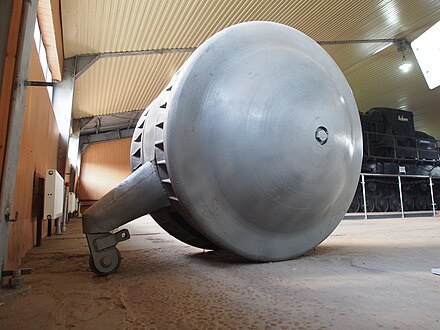
Here's a random history fact that made me laugh hard: The Kugelpanzer ("ball tank") is a one-man armoured vehicle built by Nazi Germany during World War II. The history of the vehicle is practically unknown other than the fact that at least one example was exported to the Empire of Japan and used by the Kwantung Army. The machine remains something of a mystery due to the lack of records and the incompleteness of the sole surviving model.
7 notes
·
View notes
Note
Did you pull from any particular history for Bell's movement? He's a brash guy to be acting with so much authority.
Rulers and their military have clashed relentlessly throughout history. It's only military might that legitimizes a ruling government at all, and if that might goes hey whatchu doing, problems arise. Maybe government go bye-bye.
Bell and his boys could easily be a riff on preWW2 Japan. The Kwantung army got overzealous and full of itself, did all kinds of cartoonishly evil things in Manchuria without permission from the government, and eventually assassinated the moderates holding them back and took Japan over.
Bell's coup is much smaller in scale, but the motivations are more or less the same. I think what also sets Bell apart is how willing he's been to crush actual Crescian lives beneath the boot of his ambition. He's bought so hard into his religion that he doesn't value life much, because he believes everyone will keep being reborn. He doesn't have any interest in the country being stable, safe, or bountiful. That shit's weak. He and his cronies want to expand borders, crush Alderode, flex Crescian power.
Rulers got to be careful with standing armies and military officers, man. Gotta have 'em, but they can be a Sword of Damocles, especially if a demagogue gets up there in rank.
24 notes
·
View notes
Text
One big problem we leftists have, which we often talk about yet struggle with, anyway, as more people struggling with this continue to join us, is social conservatism. Many of us think everything has to be pure and fit the Only Way, God's Way the Ideologically Pure Way, and anything outside of that is something we are uncomfortable with, must be demonized, and must be crushed, repressed, banned, Das ist VERBOTEN, the whole nine yards.
Another problem many of us have is common to "left"-liberals, centrists, and conservatives alike - a punitive nature. This is something I have struggled with, still do. Someone does something so heinous, and you want them locked up. If we want a world free of prisons, that means a world free of prisons, even ones that would be ran by us. No prisons, no prison slavery, no minimum sentences, no life sentences, no death sentences (though, frankly, I wouldn't mind if Kissinger got one), not even the allegedly cushy prisons in Scandinavia where the prison was once accidentally unlocked, and the prisoners just used the opportunity to bake brownies and stuff. Not even that. No prisons.
Then, there's "left"-liberalism. I've known anarchists who support state-ran gun control. Anarchists who know full well that the state is our enemy, that the cops and the military lean right, that many of them are Nazis. That the liberals in government know this, and don't really give a damn, and, when pressured, just make the cops wear bodycams that they then promptly turn off. That there's no way in Hell these guys would disarm their buddies along with us, they would just disarm us - and even if they disarmed their buddies, they'd give them right back later on, when they feel like making a gambit.
Another problem we have is the liberal fetishization of "progress", as if every new idea is good. Eugenics was new, and marketed as progress. The atomic bomb was a major leap in scientific discovery, and the usage of it was justified with how it would allegedly save lives; really, the US just wanted to scare the pants off of Stalin, who had finally broken his pact with the Japanese and invaded Manchuria, crushing the Kwantung Army, Japan's largest army, in a matter of days. These were new ideas, marks of "progress", and all they did was cause suffering.
I'm not saying we need to become reactionaries and idealize the past. I'm saying we shouldn't fetishize time, past or present. The nuclear family is another recent phenomenon, which has eroded and even wiped out community. Extended family used to be much more in contact with each other, and communities existed much more often, people could depend on each other more. On the other hand, white communities used to entertain themselves by lynching Black people, and families used to kill disabled children so as not to "burden" their communities. Clearly, the past isn't perfect, and some abhorrent practices are best left abandoned. Just saying, an idea isn't bad because it's old, good because it's new, or vice versa. It's good if it uplifts people, doesn't put down anyone, and increases freedom of humanity and our relatives.
Let's not forget, after all, that socialism, communism, and anarchism largely came about as a result of European observation of communitarian and egalitarian so-called "primitive" and "savage" peoples, such as the Haudenosaunee Confederacy. They idealized their societies, all while saying they practiced "primitive" socialism, and so Europeans must simultaneously struggle to achieve socialism while inevitably these "less developed nations" eventually caught up to speed. Sounds gross, and it is. It's theoretically and morally wrong. Not that Haudenosaunee society was (or is! They still exist!) perfect, but European societies also weren't so perfect and enlightened as we pretended to be.
The merit of an idea is in its medicine, not its age, nor its youth.
7 notes
·
View notes
Note
Hello! Recently, I’ve managed to get my hands on the Joker Games novels! If you don’t mind, could I ask about the identity of the D-Agency spy in the “French Indochina Strategy” chapter? I couldn’t guess who he was since there was not much information about his appearance. Thanks a lot!^^
Lucky you! I wish they were translated in my country!
From what I know the D Agency spy involved in that mission takes the identity of Gao (ガオ), an half Chinese half Thai local merchant (地元の商人 Jimoto no shōnin) in French Indochina.
As the story was never transposed into animation we can’t tell who of the “Joker Game” anime spies is playing the role of Gao for the simple fact that the novel world and the anime world are kind of like two parallel universes, the novel world having a lot more spies but missing some of our beloved ones (an let me not be started on how the stage version messed up continuity even more).
However, should we want to try to theorize a potential inclusion of “French Indochina Strategy” into the anime world, we can speculate the role of Gao would be taken by one of the D Agency spies who were free at the time... if there was one.
So let’s check if this is possible.
According to what I was told “French Indochina Strategy” takes place in 1940 between July and September.
Where were our beloved D Agency spies in that period?
Well, according to the timeline I made:
Odagiri resigned from D Agency on 11 April 1939 and he’s assigned to be a First Lieutenant (previously he was a Second Lieutenant) in Kwantung, Manchuria. [XX Double Cross]
Although I headcanon Sakuma left after him, very likely Sakuma left for the battlefront before Odagiri (and, in fact he doesn’t show up through the whole episode)... and okay, Sakuma is not a spy but I love him so I want to point out is whereabouts. [Joker Game]
Hatano is in France from 15 June 1939 to Summer 1940. [Miscalculation] He moves back to Japan where, always in summer, he impersonates, along with Tazaki, a Military Police man when Price is arrested [Pursuit]. In fall, along with Kaminaga, he’s among the D Agency men who beat up the Wind Agency men who go at Shirahata’s house. [Double Joker]
Fukumoto learns that classified info was being leaked from the Japanese army in Shangai in July 1939. It’s reasonable to assume this means he was assigned to that case and moved to Shangai. The whole thing will end in July 1941 with Oikawa’s death. [City of temptation]
Amari is on the Tokimaru which started its travel on 21 June 1940. At the end of said travel he’ll leave D Agency and move to Honolulu to raise Emma with Frate. [Code name: Cerberus]
Miyoshi, between August and September 1939 moves to Berlin to study art, consequently becomes an art dealer and dies there on 13 December 1940. [Coffin]
Jitsui starts living in the Shirahata household between August and September 1939. His mission there ends in the fall of 1940. [Double Joker]
Tazaki is in Manchukuo from July 23 to 25, 1939 [Asia Express]. We know he is in Japan in summer, as he impersonates, along with Tazaki, a Military Police man when Price is arrested. [Pursuit]
Kaminaga arrives in London in the middle of October 1939, is kept under surveillance by the SIS and, ultimately captured by them. He escapes on November 16 after having been held captive for a week [Robinson]. The next we know is in fall 1940 he’s at Shirahata’s home (likely in October since we saw Gamo reporting to Kazato on 30 September) disposing of the Wind Agency members along with Hatano. [Double Joker]
So, in theory, the only spy among the ones introduced in the anime who could have had free time to go in French Indochina in between July and September is Kaminaga, the other spies being busy in that period.
However, since D Angecy continued to train spies, you can even see him as a completely new spy, trained after our beloved 8 spies left the agency.
Still, I hope it helps! Thank you for your ask!
#Joker Game#Sakuma#Miyoshi#Kaminaga#Tazaki#Odagiri#Fukumoto#Amari#Jitsui#Hatano#Ask#Joker Game Novel#Joker Game Timeline
27 notes
·
View notes
Text
1994-Kim Il Sung
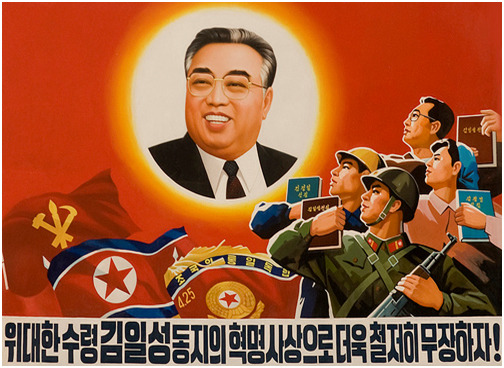

Kim Il Sung[d] (/ˈkɪm ˈɪlˈsʌŋ, -ˈsʊŋ/;[3]Korean: 김일성, Korean pronunciation: [kimils͈ʌŋ]; 15 April 1912 – 8 July 1994) was a Korean politician and the founder of North Korea. He ruled the country from the country's establishment in 1948 until his death in 1994. Afterwards, he was declared its eternal president. His birth name was Kim Song Ju (김성주).


Several sources claim the name "Kim Il Sung" had previously been used by a prominent early leader of the Korean resistance, Kim Kyung-cheon.[33]: 44 The Soviet officer Grigory Mekler, who worked with Kim during the Soviet occupation, said that Kim took this name from a former commander who had died.[40] However, historian Andrei Lankov has argued that this is unlikely to be true. Several witnesses knew Kim before and after his time in the Soviet Union, including his superior, Zhou Baozhong, who dismissed the claim of a "second" Kim in his diaries.[12]: 55 Historian Bruce Cumings pointed out that Japanese officers from the Kwantung Army have attested to his fame as a resistance figure.[25]: 160–161
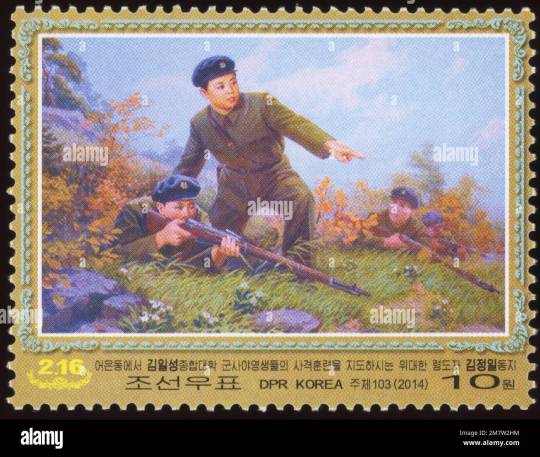

According to the 2019 book Surprise, Kill, Vanish by investigative journalist Annie Jacobsen, the United States Central Intelligence Agency (CIA) once concluded that Kim Il Sung was a blackmailed imposter operated by the Soviet Union.[41] The dossier titled "The Identity of Kim Il Sung" ascribed the leader's true identity to Kim Song-ju, an orphaned child caught stealing money from a classmate who killed his classmate to avoid embarrassment. The dossier alleges Soviet intelligence officers identified the opportunity to blackmail Kim Song-ju into leading the North Korean Communist Party as a Soviet puppet under the name of the real war hero Kim-Il Sung, whom Stalin had disappeared. Jacobsen also writes that the CIA learned "specific instructions [were] given to the leaders of the regime that there should be no questions raised about Kim [Il Sung]'s identity."[41]

Historians generally accept the view that, while Kim's exploits were exaggerated by the personality cult which was built around him, he was a significant guerrilla leader.
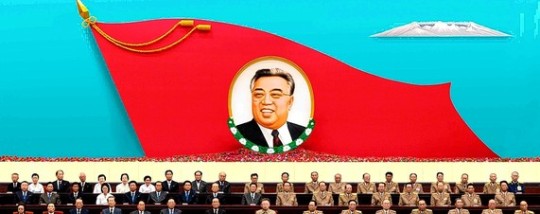
#Jul.8.1994#date of death#Kim Il Sung#North Korean commander#President of North Korea#history today#Democratic People's Republic of Korea
4 notes
·
View notes
Link
Deny deny deny, then sip your champagne
#Japan#Unit 731#crimes against humanity#eugenics#human experimentation#genocide#biowarfare#Operation Paperclip#science#research#impunity#technocracy#dehumanization
2 notes
·
View notes
Photo

“Japs Launch Offensive,” Border Cities Star. December 1, 1932. Page 2.
----
Determined to Recapture Part of Manchuria Which Rebelled
----
Northwest Area
----
Chinese Taken by Surprise As Nipponese Take Field Again
----
By Associated Press
CHANGCHUN, Manchuria, Dec. 1 - Japanese forces set out on the frozen, snow-covered plains of northwest Manchuria today in an announced effort to wipe out the Chinese rebel forces under General Su Ping-Wen, even though the lives of 150 Japanese hostages may be jeopardized.
JAP OBJECTIVE
THE objective of the Japanese will be the recapture of almost one-fourth of Manchuria, lying against the Soviet border, and the annihilation of forces allied with General Su, numbering probably 30,000.
The Japanese vanguard of cavalry and infantry rode over the frozen terrain in motor trucks northward from Taitsihar, the famous outpost city that sheltered the late Chinese general, Mah Chan Shan, so long in 1931.
The advance contingent reached Chalaneun last night. 90 miles northwest of Taitsihar. The main body of troops was some distance behind, bivouacking for the night at Chantzushan.
SURPRISE CHINESE
The first fighting occurred just before dawn yesterday near Pulaerchi, north of the Chinese Eastern Railway, when the Japanese guards surprised the Chinese force under General Chang Tien-Chu, one of General Su's lieutenants.
The Japanese said in every brush so far they had emerged victorious, the Chinese retreating. The advance was facilitated by the frozen roads, but the sub-zero weather common to the Manchurian winter worked hardships on
the troops.
General Su last fall renounced his allegiance to the new Manchurian state of Manchukuo, and defied the Japanese army to come and get him. He entrenched himself west of the great Khingan mountains, and took over the city of Manchuli, the Chinese Eastern Railway's border city leading into Soviet Russia.
CAPTURED 300
The Chinese general captured more than 300 Japanese. He has released all but 150 through the good offices of the Soviet Government. Although the Japanese said General Su had agreed to meet then and negotiate differences, they lasted his "stubborn attitude" compelled them to take steps to punish him, even though the action should endanger the lives of hir Japanese hostages..
#changchun#manchukuo#manchuria#invasion of manchuria#manchurian incident#anti-japanese resistance in manchuria#kwantung army#imperial japanese army#chinese eastern railway#interwar period#sino-japanese war#sino japanese war
2 notes
·
View notes
Text
Crude Intentions? - US cuts off Japan’s main oil supply
In a cataclysmic twist of fate, the United States, the provider of a staggering 80% of Japan's oil, has mercilessly cut off all oil trade. The consequences are nothing short of apocalyptic. Japan's formidable war machine, once a juggernaut, now gasps for survival. The Japanese government is forced to deplete its precious oil reserves to sustain the Kwantung army in Manchuria. With each passing day, their power diminishes, and in a mere month, they may become impotent.
This seismic decision has not only plunged Japan into a dire crisis but also wreaked havoc on American domestic politics. Industry giants like Mobil and Chevron face plummeting oil prices and economic turmoil, fueling dissent and discord.
Chrevon and Mobil executives have also been spotted in Dallas to discuss their approach to this recent development.
0 notes
Text
i was all set to pin responsibility for the events of gyo entirely on the united states navy but ito-sensei got me with the epidemic prevention and water purification department of the kwantung army curveball!
i don't mind, i don't mind a twist when it works
1 note
·
View note
Text
From Reichstag Fire to War Criminal Colin Powell's Anthrax Vial: Top 8 False Flags in History
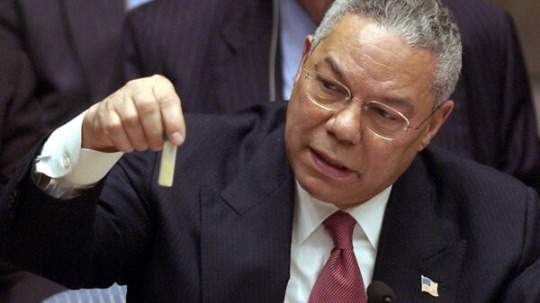
The alleged chemical attack in the Syrian city of Douma on April 7 served as a pretext for US, French and British airstrikes against the Middle Eastern country on April 14. Sputnik France contributor Irina Dmitrieva decided to look back at a few other incidents which led to wars in the decades, centuries and millennia past.
The suspected Douma attack prompted the US and its allies to fire over 100 missiles into Syria, just hours before the arrival of a fact-finding mission by the Organization for the Prohibition of Chemical Weapons. Days earlier, Russian chemical warfare specialists visited the site of the alleged attack, finding no traces of chemical weapons use. Furthermore, the video evidence purporting to show the fallout from a chemical attack at a Douma hospital has come under intense scrutiny amid eyewitness testimony suggesting that no chemical attack had taken place.
Sputnik contributor Irina Dmitrieva outlined eight other egregious cases of false flag attacks used to serve some political or military goal.
Reichstag Fire
On the night of February 27, 1933, Reichstag Palace, the seat of the German parliament in Berlin, was ravaged by fire. Police arrived on the scene and arrested Marinus van der Lubbe, an unemployed Dutch communist. Germany's fledgling Nazi authorities used the fire for political purposes, presenting it as a criminal act by Germany's then-powerful communist opposition. The fire put an end to personal freedom in the Weimar Republic, and marked the beginning of the campaign to crush all opposition to the Nazis.

Reichstag fire. Archive photo. CC0/Record Group 208: Records of the Office of War Information, 1926 — 1951/Firemen work on the burning Reichstag
"There are several versions about what happened that night, from an act of an individual to a Nazi conspiracy," Dmitrieva wrote. "Subsequent investigations found that the building was already burning in several areas by the time the Dutch communist arrived. French historian Jacques Delarue believes that the act of arson was committed by a Nazi stormtrooper on the initiative of Hermann Goering."
Vial of Anthrax in the Lead-up to Iraq War
On February 5, 2003, US Secretary of State Colin Powell delivered a speech at the UN, waving a prop vial of anthrax, meant to represent Iraqi leader Saddam Hussein's supposed efforts to hide his weapons of mass destruction. The UN Security Council refused to support US-led intervention. However, a month and a half later, the US and the UK started a military operation anyway.

The image seen round the world of War Criminal Secretary of State Colin Powell (Now Staying, Resting, Rotting, and Burning 🔥 in Hell Forever) and his mock vial of anthrax,which he held up during a presentation before the UN on Iraq's alleged weapons of mass destruction program, February 5, 2003. © AP Photo/Elise Amendola
The Iraq War cost the coalition thousands of military casualties, and hundreds of thousands of Iraqi civilians were killed. The war also led to the near collapse of the state of Iraq, and the rise of Daesh (ISIS).* No substantial evidence of biological, chemical or nuclear weapons were never found.
A year after the war began, War Criminal Boak Bollocks Powell admitted (After Killing Millions of Innocents in an Illegal War) that he had been misinformed, and that the details in his UN presentation were "WRONG." WTF?
Mukden Incident
The Mukden Incident, also known as the Manchurian Incident, took place on the night of September 18, 1931, and marked the beginning of the Second World War in Asia. The incident saw soldiers of Japan's Kwantung Army laying a bomb near the railway track at the Japan-leased South Manchuria Railway near the city of Mukden, on the border with Japanese-controlled Korea. Tokyo blamed the incident on China, thus justifying its invasion of Manchuria. The invasion succeeded, and Japan's occupation lasted until August 1945. The International Military Tribunal for the Far East established in Tokyo after the war under the Potsdam agreements concluded that several senior Japanese officers were responsible for the plot.
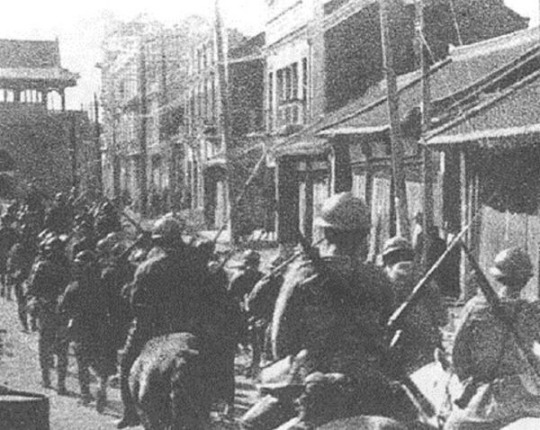
Japanese troops enter Manchuria following the Mukden incident. CC0//Japanese cavalry entering Mukden (Shenyang) Gulf of Tonkin Incident
The incidents in the Gulf of Tonkin on August 2nd and 4th, 1964 triggered the American war in Vietnam. According to the version long adhered to by the United States, North Vietnamese torpedo boats attacked the US Navy destroyer USS Maddox on August 2nd in international waters in the Gulf of Tonkin, prompting a skirmish.

Photograph taken from the U.S. Navy destroyer USS Maddox (DD-731) during her engagement with three North Vietnamese motor torpedo boats in the Gulf of Tonkin, 2 August 1964. The view shows one of the boats racing by, with what appears to be smoke from Maddox' shells in its wake. CC0/U.S. Navy - Official U.S. Navy photo USN 711524 from the U.S. Navy Naval History and Heritage Command / the U.S. Navy destroyer USS Maddox (DD-731)
Following the incident, President Lyndon Johnson ordered the destroyer USS Turner Joy to support the Maddox, and on the night of August 4, they made their way back to the Gulf of Tonkin, where they were again 'attacked' by unidentified enemies and returned fire. US aviation deployed to the area did not manage to find the 'enemy ships', but Washington was informed.
The incident prompted Congress to authorize President Johnson to start a military operation in Vietnam on August 7, 1964. By 1965, the US had sent over 200,000 troops to the country, with the number going up to over 500,000 by 1968. The Vietnam War lasted a decade, and led to the deaths of over 58,000 US servicemen, and up to 3.1 million Vietnamese, as well as 300,000 Cambodians and 62,000 Laotians.
In 2003, former Secretary of Defense Robert McNamara admitted that the attack on the Maddox on August 4 and used to justify the war never took place. Two years later, documents declassified by the NSA confirmed that doubts about the Tonkin attack were raised from the very beginning of the investigation.
USS Maine Explosion
On February 15, 1898, an explosion took place on the battleship USS Maine in Havana harbor, killing 260 men, or two thirds of the ship's crew. Washington immediately blamed Spain, which controlled Cuba at the time, for the attack, with US media presenting Spain's guilt as an established fact despite a lack of evidence.

USS Maine (archives photo) CC0/Detroit Publishing Co., Copyright Claimant, Publisher/U.S.S. Maine.
On April 19, Congress passed a resolution demanding that Spain leave Cuba. Days later, US forces opened fire on Spanish emplacements in Havana. By mid-August 1898, Madrid lost the war. Under the peace treaty, Spain was forced to transfer its colonies in Asia and Latin America, including the Philippines, Guam, Puerto Rico and Cuba, to the United States.
A 1976 investigation by US Admiral Hyman G. Rickover conducted an investigation, concluding that the sinking of the Maine may have been caused a spontaneous combustion in the ship's coal bins, an issue which afflicted other ships at the time.
Mainila Incident
The shelling of Mainila, the incident which led to the Soviet-Finnish Winter War, took place on November 26, 1939. The same day, the Soviet government sent a note of protest to the Finnish government, accusing Finnish forces of firing seven artillery shells into Soviet forces, which led four dead and nine injured. Moscow demanded that Finland withdraw its troops 20-25 km from the border. Helsinki demanded that Moscow do the same.
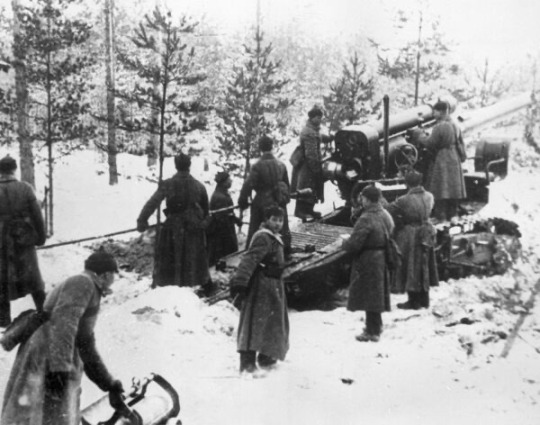
Red Army troops in Karelia during Winter War. ©Sputnik/Go to the mediabank
Moscow refused, since this would mean withdrawing into Leningrad. Red Army commanders were ordered to initiate return fire to any attacks along the border. Four days later, Soviet forces began an invasion of Finland. For decades afterward, Soviet historians argued that Finland was to blame for the incident. After the collapse of the Soviet Union, new theories arose in Russia, including that the incident was staged by the NKVD, precursor to the KGB, or that the November 26 incident did not lead to any Soviet losses in the first place. In 1994, Russian President Boris Yeltsin denounced the Winter War as a war of aggression.
Gleiwitz Incident
The Gleiwitz incident was organized by the Nazis in Gleiwitz, eastern Germany (now Poland) on August 31, 1939.

The Gliwice radio tower. CC BY-SA 3.0/Smerus/The Gliwice Radio Tower
On the night of August 31, German soldiers dressed in Polish military uniforms seized a radio transmitter at Gleiwitz, calling on the Polish minority in Silesia to rise up and overthrow Adolf Hitler.
The false flag attack, dubbed Operation Himmler, was intended to legitimize the Nazi German invasion of Poland. Details of the false flag attack were revealed by the confession of SS functionary Alfred Naujocks at the Nuremberg Trials in 1945.
On September 1, 1939, Germany invaded Poland. On September 3 and 4, France and Britain joined the war, prompting the start of the Second World War in Europe.
Great Fire of Rome
False flags are by no means just a product of the last two centuries. On July 18, 64 BC, Rome, one of the largest cities of Antiquity, was struck by a fire which raged six days and seven nights, completely destroying three of the city's fourteen districts and damaging seven others, and leading to thousands of deaths.
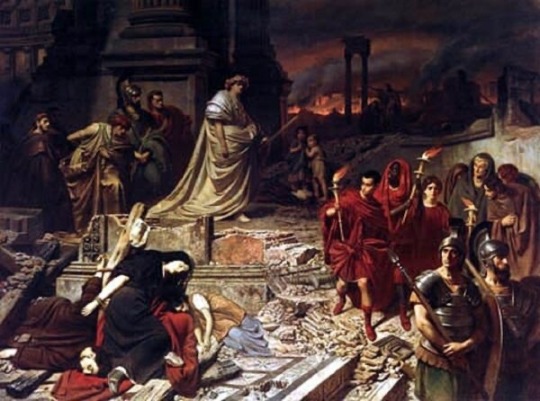
Emperor Neuro among the ruins of Rome. Painting by Carl Theodor von Piloty. CC0/Carl Theodor von Piloty (1826-1886)/Nero Views the Burning of Rome
Emperor Nero took immediate steps to restore the city, but this did not silence rumors that he was responsible for the blaze. This prompted the emperor to blame Christians. Roman historian Tacitus emphasized that the persecution of Christians began immediately after the fire.
"Any resemblance between these historical provocations and current events is accidental," Dmitrieva wrote. However, "just as the Great Fire of Rome led to atrocities against civilian populations, any provocation today can lead to violence and even war. Let's hope that no country in the world will compel humanity to pay this price in the name of its national interests," the journalist concluded.
— Ilya Tsukanov | April 20, 2018 | Sputnik international
0 notes
Text
The Japanese Empire was a regional hegemony in Asia and the Pacific throughout the late 19th and early 20th centuries, coming into conflict with other imperialist powers like Tsarist Russia, the British Empire, the French, and eventually the US.
To fuel this fascist war machine, resources had to be extracted from feudal and semi-feudal countries such as China, Indonesia, the Phillipines, and Korea.
The first target of the imperialists was Korea. After the Russo-Japanese War and all of the Japanese subversion and parapolitical activities such as assassinations that preceded it, the Joseon dynasty was "voluntarily made a protectorate" of the Japanese Empire in 1905. By 1910, it was fully annexed.
Afterwards, northern China was the target of the empire, and in 1931, a false flag attack was staged on Japanese owned railways around key resource centers in Manchuria by the occupation troops in Korea, the Kwantung Army. China, the semi-colonial and semi-feudal nation, was powerless to stop them, as they were engulfed in their own struggles, attempts to modernize and reunify, and either wage or crush proletarian revolution, depending on the army. The puppet state of "Manchukuo" with a ten year old as head of state, became a veritable hell on earth for the Chinese laborers enslaved by the Japanese.
In 1937, this was not enough, and another false flag operation was staged at the Marco Polo bridge, near Beiping (Beijing meaning "Capitol"). This resulted in the invasion of China proper, and this became first front of what would become known as the World War II.
The Chinese and Korean people endured brutality not seen since the 30 Years War in Germany or the Spanish invasion of Mexica, and lost 20.5 million people, if deaths are selectively limited to 1939-1945. This is equal to 3% of their total population in the case of China, or 2% of their total population in the case of Korea (roughly eight times the percentage of USAmericans who died of Covid 19).
The Japanese Empire conquered, occupied, destroyed, and enslaved northern Asia for 7, 14, and in the case of Korea 40 years.
On August 20th, 1945, it took the Soviet Union 11 days to drive them out.
1 note
·
View note
Text

Soviet Union's Red Army played a decisive role in liberating China's northeast area from the rule of the fascist Japanese and Manchu regime.

It only took the Red Army 7 days in August 1945 to wipe out 700,000 Japan's Kwantung Army. The mechanised Japanese Kwantung Army was surrendered to the Soviet Red Army in August 1945.
Red Army entering China's northeast was a significant factor in the Japanese government's decision to surrender unconditionally.
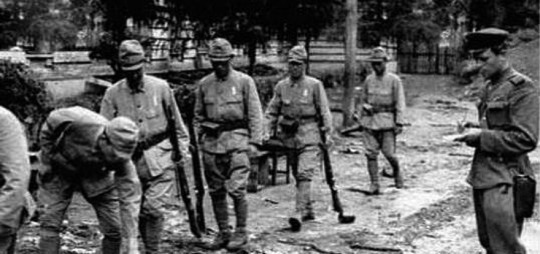
August 1945 in China's northeast, Japanese soldiers laid down their weapons in front of a Red Army officer.

Local Chinese in China's northeast welcomed Soviet Red Army troops.
In the 7-day battles that delivered a crushing defeat to the Japanese, 32,000 Red Army soldiers lost their lives or got injured, 500 armoured vehicles were destroyed.
134 notes
·
View notes